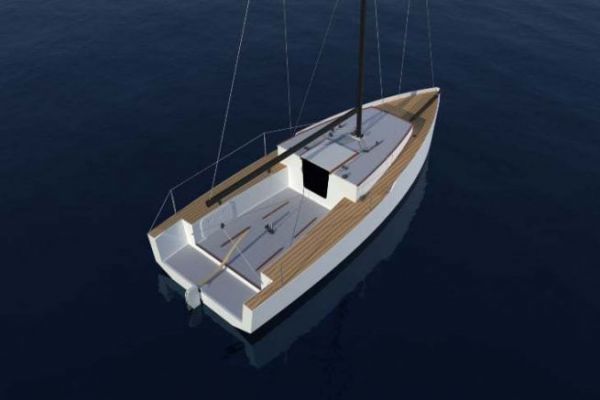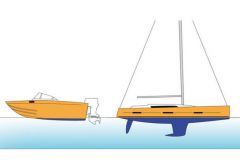From the drawing board to the shipyard
Titouan Couvrant and Tanguy Turpin are students at the DPEA of naval architecture in Nantes. As their year of training progressed, the two friends matured the project of designing a boat together and building it. The first explains: "We thought it would be fun to make a boat from start to finish, from design to sailing together. We started by drawing a few hull shapes like that for fun, and then it eventually became our senior project. It's interesting to see the difference between Rhino, the 3D design software, and the workshop."
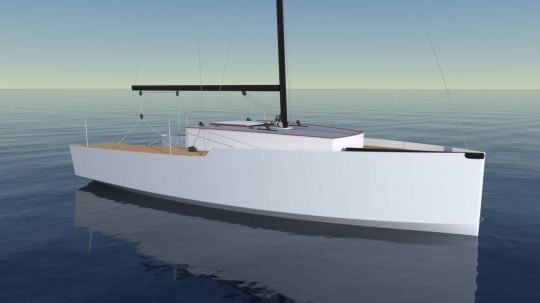
A dayboat of less than 6 meters
To move forward, the young naval architects have given themselves simple specifications, but with professional requirements that go beyond the classic amateur builder, as Titouan points out. "Our goal was to be economical, hence the choice of epoxy plywood, which constrains the shapes. We started looking at boats around 7 meters, but when we looked at the calculations, the cost seemed high. But even though we were amateur builders and it was not compulsory, we wanted to respect the ISO standards like professionals. Since it was simpler under 6 meters, we came up with the La´ta 5.80."
After a few hydrodynamic calculations about the number of chines, the duo imagined a small transportable sailboat of 5.80 m long for 2.20 m of beam. With a small roof, the boat, mainly dedicated to day-boat, allows nevertheless to shelter 2 persons for one or two nights in a Breton bed.
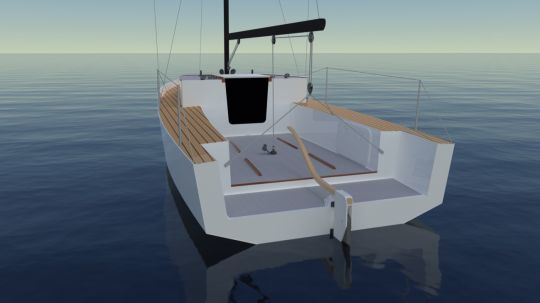
An integral dinghy with a draft of 1.60 m, the Laita 5.80 has a sail area of 23 m2. With a load displacement of 830 kg for 4 people, the sail plan should allow for reasonable performance.
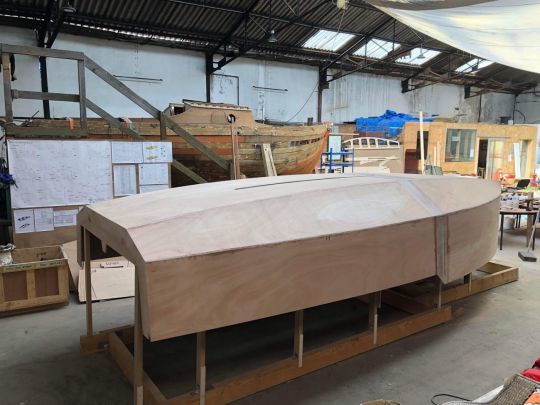
A construction to the rhythm of the seasons and work
Since then, the two young architects have started working in firms and are devoting themselves to the construction of the La´ta in parallel to their activities. But the project is progressing, without any big surprises, but with some lessons for the designers, as Titouan testifies. "The association of the old riggings of Saint-Nazaire was willing to welcome us. We started in June 2022, but it was complicated to move forward this summer. With the heat in the hangar, the resin polymerized too quickly. But overall, we were quite satisfied with never more than a few millimeters of difference in the assembly. Only the intermediate chine was a little complicated to plate."
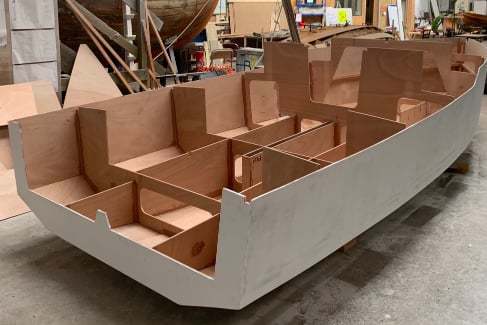
The duo will show us in the future the progress of the work.
